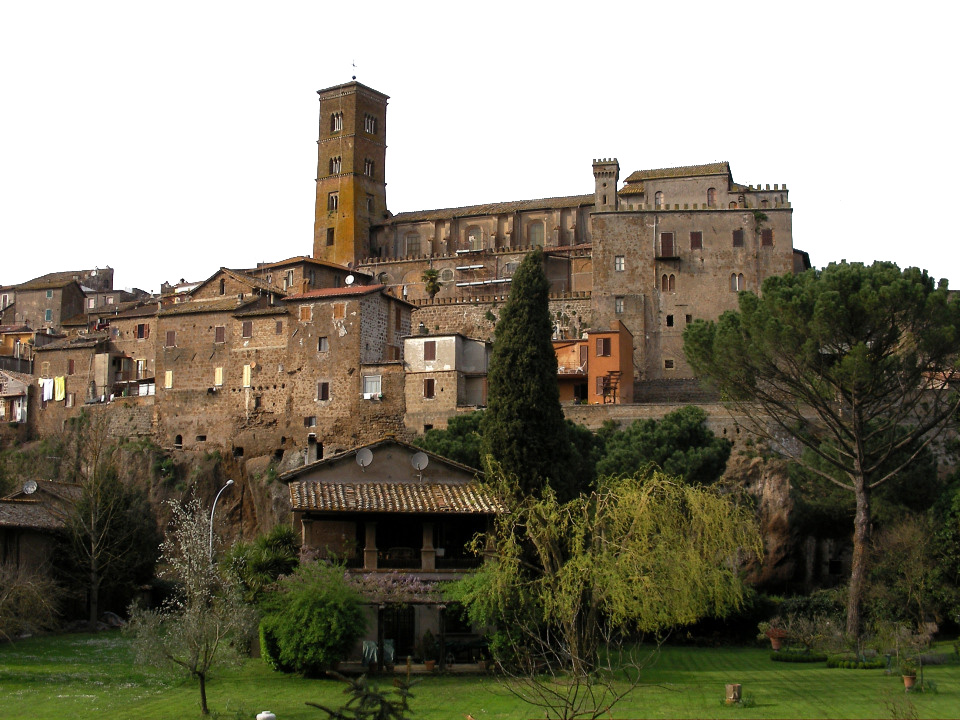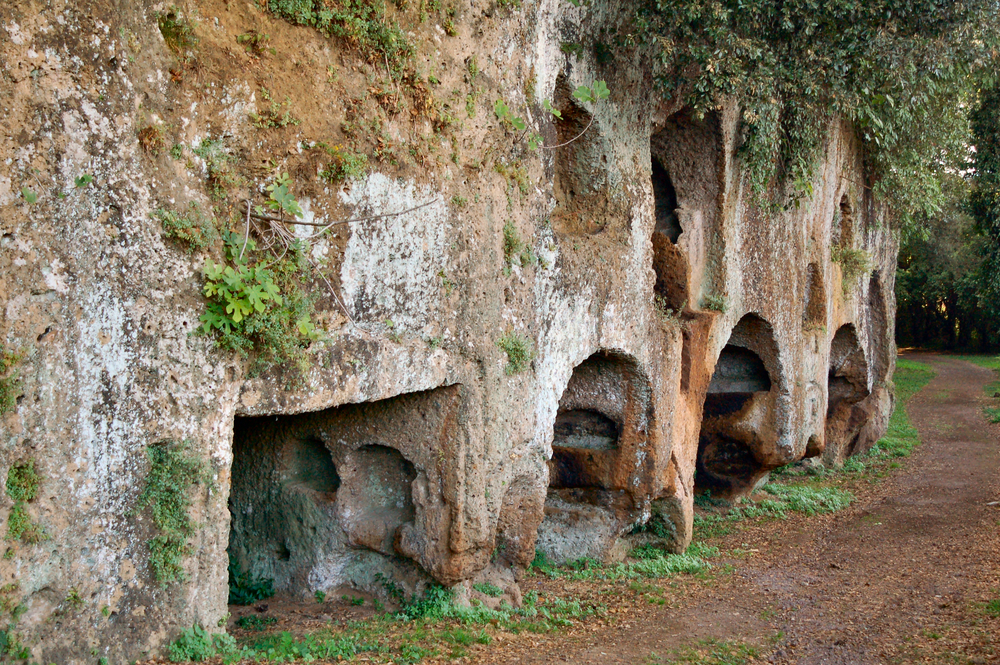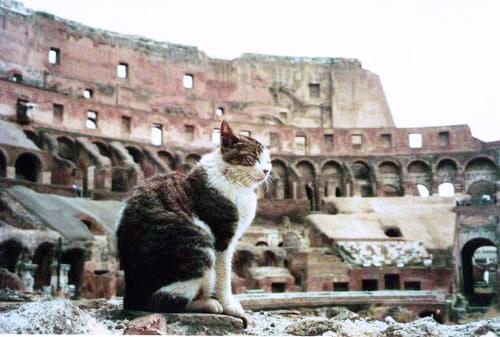the etruscans
When most people travel to Rome they are automatically drawn to historical sites that either relate to Ancient Rome or to Christianity. But many fail to realize that there are archeological sites and monuments of splendor that are neither Roman nor Christian, but are from the population that inhabited Italy before the Romans, the Etruscans. If you are visiting Rome, you do not have to travel far to find a sterling example of this ancient culture.
One of the most beautiful and relatively undiscovered Etruscan archeological sites is Sutri, a lovely little town just an hour from the Eternal City. Rising above Via Cassia, an important consular road back in the days of the Roman Empire, the ancient hill town sits just about midway between the Eternal City and Viterbo.
While travelling along Via Cassia, apartment buildings and roadside construction quickly fade away and are replaced with lush dense vegetation. Noted for its precious archeological finds covering the Bronze, Etruscan, Roman and Middle Ages, Sutri is a treasure trove of priceless antiquities which most notably include an excavated Roman amphitheater, an Etruscan necropolis, a mithraeum, a secretive place of worship for practitioners of the mystery religion of Mithraism and the Church of the Madonna del Parto.
Sutri’s impressive amphitheater is completely carved out of local tufa stone. Although it is fairly small when compared to other amphitheaters, it offers an enchanting, almost mystical atmosphere and gives visitors an intimate, quiet feeling. Opinions vary as to exactly when it was built, ranging from as early as the Etruscan archaic period to the first decades of the Christian era.
Just outside the amphitheater is a series of Etruscan tombs, excavated out of rock and together constitute ancient Sutri’s municipal cemetery. The tombs extend for about 180 yards and date back to the ancient Roman period. Featured are assorted types and sizes of tombs, not all of which are visible. Many have been badly damaged from years of local farmers using them as a storage units for farm equipment. Some farmers even used the tombs as pig sties, a practice which has always been common in the area, as evidenced by the name of one site – Grotta Porcina or Pig Grotto.

the etruscan tomb
One thing that sets this necropolis apart from most is that burials and cremations were practiced here simultaneously. Because of this, some of the tombs were used for burials, others hold cremation urns and some have both. This has led experts to surmise that the tombs were used again and again over successive periods of time.
All Roads Facts Lead to Rome
A particularly interesting tomb is carved much deeper into the bedrock than the others and is a perfect example of different uses in different eras. After first belonging to wealthy Etruscans, it was used by the Romans, then later converted into a temple by the Mithraic cult. It was finally adopted by the Christians, who had a habit of building churches atop Mithraic shrines or pagan temples. Thus, in the 6th or 7th century AD, Sutri’s Mithraic shrine became the Church of the Madonna del Parto.
Any visit to Sutri is not complete without catching a glimpse of the restored Grotta Porcina. It features countless caves excavated into the tufa cliffs, plus a large circular structure, perhaps a mausoleum or illustrious family’s shrine, dating back to the 5th century BC.
An interesting fact about Sutri is that it was a popular rest stop during the Middle Ages for millions of religious pilgrims making their way from the north to the Holy See in the south. They traveled along Via Francigena, which was a series of roads and trails that stretched from Canterbury in England, across the Channel into France, over to Switzerland and eventually into Italy and down to Rome, giving credence to the age-old saying, “All roads lead to Rome.”





